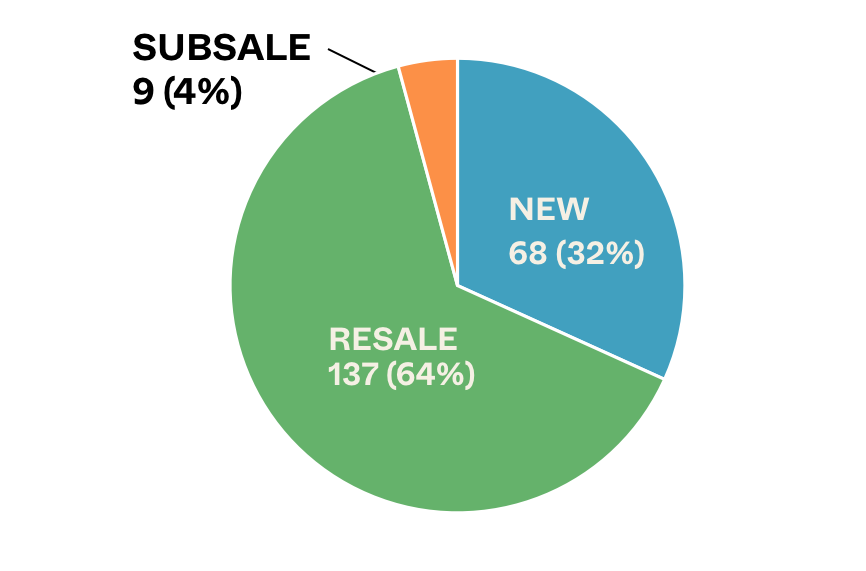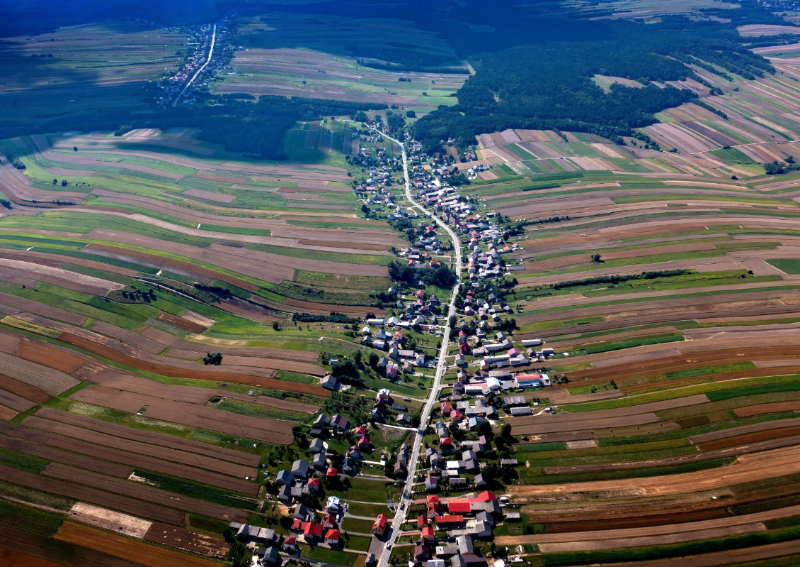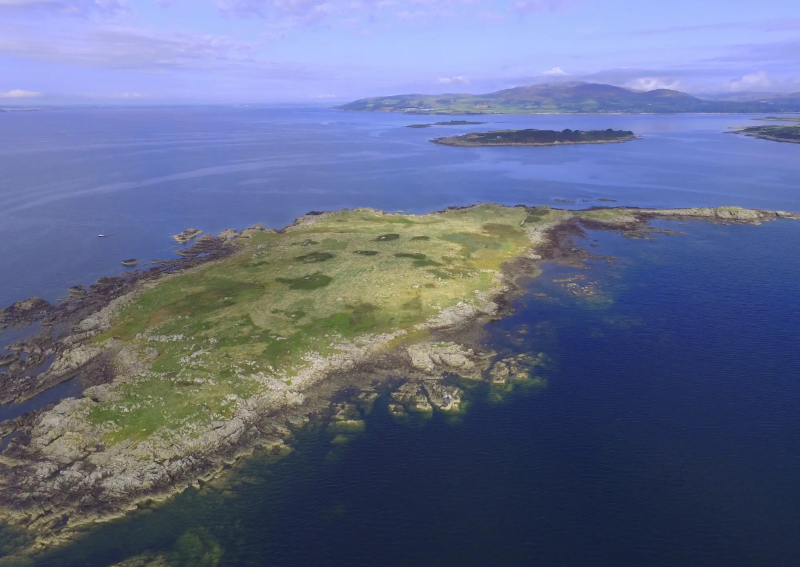A $100b city turned into a ghost town

The world's most expensive monument to overconfidence is nearer than you think…
I'm talking about Forest City, a massive ghost town right across the Causeway. This development is around 1,740 hectares (17.4 square kilometres), which is almost the entirety of Jurong East or apparently four times the size of Monaco.
It was built by Country Garden (China's largest developer) supposedly to the tune of $100 billion. But as of 2019, only 500 out of the expected 700,000+ residents were living there.
I've had a chance to briefly visit the place, and while we can crack any number of jokes about it — the world's most expensive horror movie set, world's biggest bar*, condo with 100,000 sq ft yard — it's also a massive problem waiting to happen.
An entire almost empty neighbourhood is a ripe set-up for squatters, crime, fires, and hygiene issues. It's a matter of time before mother nature beats the scant maintenance staff, and the vermin start to move in… and given Malaysia's reputation for build quality, I don't have high hopes for how it's going to turn out.
All of this due to speculation and overconfidence: the certainty that the High-Speed Rail would have been operational by the time of completion, the surety that businesses would be rushing into Iskandar, and even the boldness of demolishing a local village to build a 700,000+ resident condo (an insane number by any reckoning).
[[nid:627077]]
There are other problems too. According to an Insider piece, Forest City is built on reclaimed land, and given how fast they tried to build it, that didn't give the reclaimed land enough time to settle. So cracks have appeared in areas, and sections of the road have sunk.
Herein lies a risk that many condo buyers don't consider since it almost never happens locally: the risk that, even if your project is completed, it can end up a total disaster.
When a project the size of Forest City fails, it's not something the government can just leave there (for the aforementioned reasons). Once the hazard of vermin, crime, and other issues take root, and it needs to be torn down, there's no telling what the condo owners will get in return.
But it's likely that, when the buyers bought their units, their main worries were about quality and non-completion. Who would have thought that even with the project finished, there could be a risk of it being a ghost town?
It's worth thinking about, before committing to giant-scale, speculative projects overseas.
*Forest City is in a special economic zone without alcohol tax, so you'll find shops selling alcohol, and their customers, still hanging around there.
In the meantime, we have ABSD issues to contend with locally.
There's a bit less reaction this time because Singaporeans have become a bit jaded by ABSD increases (but also the big jumps have really been for foreigners). In the property industry sure, it's always exciting news — but after reaching out, I've begun to sense a rather "meh" reaction. Realistically, how many can afford a second property in Singapore anyway?
My cousin's reaction, I think, has become the norm; and it goes along the lines of:
"Please, as if I can afford to own two houses in one lifetime. Even if I am going to buy privately, I still have no ABSD. 17 per cent, 20 per cent, 100 per cent, all also no difference to me."
[[nid:627257]]
Now I don't think this is right, as raising the ABSD does have an effect even on upgraders. Fewer people buying a second or third home, for instance, ensures that prices don't rise so far that the average Singaporean can't afford it.
However, ABSD has developed what I call the "spleen effect."
Do you know what your spleen does? I bet not. You likely wouldn't know or care, until the day it stops working — then it's a nightmare and you'll realise how badly you need one.
The same goes for ABSD. I think it's one of those policies that works well and does its job — but no one really notices, precisely because it's working. If we were to remove ABSD overnight, then we'd feel the impact… and I think there would be blood in the streets.
Bear in mind, the ABSD amount alone (typically upward of $270,000 at least) would make it possible for many more Singaporeans to keep their HDB flat, and also buy a second property.
While we first saw ABSD as a hindrance — and more recently as another "meh" policy gesture — it is an instrument that has kept private homes within reasonable reach for upgraders.
| PROJECT NAME | PRICE S$ | AREA (SQFT) | $PSF | TENURE |
| KLIMT CAIRNHILL | $7,370,000 | 2056 | $3,585 | FH |
| THE GAZANIA | $3,700,000 | 1970 | $1,878 | FH |
| PULLMAN RESIDENCES NEWTON | $3,679,830 | 1163 | $3,165 | FH |
| JERVOIS PRIVE | $3,570,000 | 1109 | $3,220 | FH |
| RIVIERE | $3,510,000 | 1141 | $3,076 | 99 yrs (2018) |
| PROJECT NAME | PRICE S$ | AREA (SQFT) | $PSF | TENURE |
| NORTH GAIA | $1,253,000 | 1001 | $1,252 | 99 yrs (2022) |
| THE LANDMARK | $1,335,312 | 495 | $2,697 | 99 yrs (2020) |
| THE ATELIER | $1,417,320 | 549 | $2,582 | FH |
| PULLMAN RESIDENCES NEWTON | $1,424,610 | 463 | $3,078 | FH |
| THE BOTANY AT DAIRY FARM | $1,433,000 | 743 | $1,929 | 99 yrs (2020) |
| PROJECT NAME | PRICE S$ | AREA (SQFT) | $PSF | TENURE |
| ALBA | $7,600,000 | 1905 | $3,989 | FH |
| WATTEN HILL | $4,800,000 | 2669 | $1,798 | FH |
| THE IMPERIAL | $4,650,000 | 1916 | $2,427 | FH |
| BOTANIC GARDENS VIEW | $3,680,000 | 1259 | $2,922 | FH |
| THE CASCADIA | $3,260,000 | 1582 | $2,060 | FH |
| PROJECT NAME | PRICE S$ | AREA (SQFT) | $PSF | TENURE |
| LE REGAL | $550,000 | 366 | $1,503 | 99 yrs (2010) |
| OCEAN FRONT SUITES | $625,000 | 409 | $1,528 | FH |
| SHIRO | $640,000 | 452 | $1,416 | 99 yrs (2014) |
| CARDIFF RESIDENCE | $655,000 | 420 | $1,560 | FH |
| THE WATER EDGE | $683,000 | 441 | $1,548 | 99 yrs (2012) |
| PROJECT NAME | PRICE S$ | AREA (SQFT) | $PSF | RETURNS | HOLDING PERIOD |
| THE TREVOSE | $3,100,000 | 1765 | $1,756 | $2,070,000 | 19 Years |
| TWIN REGENCY | $2,900,000 | 1442 | $2,011 | $1,910,000 | 19 Years |
| OXLEY GARDEN | $3,100,000 | 1647 | $1,882 | $1,850,000 | 17 Years |
| BALMORAL GATE | $2,750,000 | 1259 | $2,184 | $1,700,000 | 17 Years |
| BOTANIC GARDENS VIEW | $3,680,000 | 1259 | $2,922 | $1,680,000 | 6 Years |
| PROJECT NAME | PRICE S$ | AREA (SQFT) | $PSF | RETURNS | HOLDING PERIOD |
| HELIOS RESIDENCES | $3,150,000 | 1281 | $2,459 | -$1,833,000 | 10 Years |
| THE TENNERY | $1,060,000 | 861 | $1,231 | -$33,235 | 12 Years |
| THE TENNERY | $820,000 | 614 | $1,336 | -$17,000 | 12 Years |
| SHIRO | $640,000 | 452 | $1,416 | -$6,563 | 11 Years |
| NEWEST | $990,000 | 635 | $1,559 | $5,500 | 10 Years |

It was just this week that I found out about a Polish village called Suloszowa, which has 6,000 of its residents living along a single nine kilometres long street. It sounds unbelievable until you actually see the photos for yourself:

I do have a lot of questions as to how such an arrangement came about. Did they have so little land that everyone had to live in a row? How does driving work, if everyone goes to work at the same time, does that cause traffic jams? How do they decide which part of the town is worth more? Would it be the houses at the end or in the middle?
Nevertheless, while this could never work in Singapore, what are your thoughts on living on such a street?
Just like Forest City, the allure would always be there for foreign property given how pricey our local market has gotten. This headline definitely caught my attention, as $190,000 for an island off the coast of Scotland certainly sounds reasonable given you can just about buy two Cat A COE's in Singapore right now.

There are currently no buildings on the island, so you will have to allocate additional costs for building infrastructure (building, etc).
What do you think, any interest in buying such an island?
It will be an interesting week ahead, as we observe how the market reacts to cooling measures. While we're expecting the usual "wait and see" approach from buyers, it could mean a big change for CCR properties that are most affected.
This article was first published in Stackedhomes.